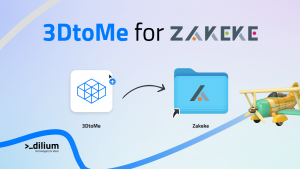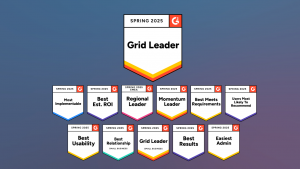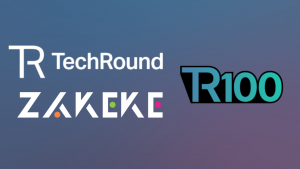Search engine visibility is crucial for e-commerce businesses. It drives traffic and boosts sales. Technical SEO for e-commerce plays a vital role in enhancing this visibility by improving website structure, speed, and functionality.
E-commerce sites face unique challenges such as managing large inventories, handling duplicate content, and ensuring fast load times across all devices. These challenges make it essential to implement robust technical SEO strategies.
In this article, let’s look at 5 key elements of technical SEO that e-commerce businesses should focus on to enhance their search engine rankings and overall site performance.
1. Crawling and Indexing
Crawling and indexing are foundational processes for search engines. Crawling involves search engine bots scanning your site’s content, while indexing involves storing and organizing this content in the search engine’s database.
For e-commerce websites, effective crawling and indexing are critical. They ensure that your products and pages appear in search results, driving organic traffic.
E-commerce sites often have extensive product catalogs and dynamic content, which can create challenges for crawling and indexing. For instance, there might be broken links, duplicate content, and heavy JavaScript and CSS files.
Consequently, search engine bots can miss or improperly index these pages, leading to reduced visibility. Here, leveraging a specialized SEO log analyzer and crawler is invaluable. These tools help identify and address issues such as the ones mentioned above.
SEO log analyzers give insights into how search engines interact with the pages of an e-commerce store. This highlights misconfigurations and errors that hinder search engine bots to crawl through the pages thoroughly and index them accurately.
After the issues are uncovered, e-commerce technical SEO teams can methodically start fixing these issues. This may involve adding internal links, removing dead pages, and changing bot permissions on the robots.txt file.
2. URL and Site Architecture
URL and site architecture refer to the organization and structuring of web pages within an e-commerce site. They are key elements for technical SEO because they impact customer experience, crawlability, and search engine rankings.
A well-structured site ensures search engines can easily navigate and index all pages, improving visibility.
Improving URL and site structure involves several strategies:
1. Short SEO-friendly URLs: Use concise, descriptive URLs that include relevant keywords (doing a good keyword research is crucial!). Avoid long, complex URLs with unnecessary parameters.
2. Canonicalization: Sometimes there could be multiple versions of the same page due to different product configurations leading to duplicate content issues. Canonicalization prevents that by telling the search engines which version needs to be indexed.
3. Breadcrumb Navigation: The site pathway trail at the top helps your visitors know where they are on your e-commerce site. This enhances user experience and improves e-commerce technical SEO as search bots can crawl the site more deeply.
4. Hierarchy and Internal Linking: Establish a clear hierarchical structure, organizing content into categories and subcategories. Use internal linking building to connect related pages, distribute link equity, and aid in crawlability.
Improving the URL and site architecture refines the e-commerce technical SEO by enhancing crawlability and indexability and delivering a better on-site experience to the visitors. This leads to higher rankings on the SERPs.
3. Speed and Performance
A fast-loading e-commerce website encourages visitors to explore the offerings more, leading to lower bounce rates and dwell time. Moreover, search engines prefer online stores that perform better, especially Google.
Several issues in technical SEO for e-commerce can affect site speed and performance. These include large image files, unoptimized code, and poor server response times. Monitoring these issues is essential for the timely discovery of these errors.
Tools like Google PageSpeed Insights, GTmetrix, and Lighthouse can help identify performance bottlenecks.
Improving e-commerce site speed and performance involves several technical SEO strategies:
1. Optimizing Images: Compress images without losing quality to reduce load times. Use modern formats like WebP for better compression rates.
2. Enable Browser Caching: This stores the frequently accessed pages on your visitor’s local devices. As a result, those pages load significantly faster on subsequent visits.
3. Adopt a Content Delivery Network (CDN): A CDN distributes your site’s content to multiple servers worldwide. This serves content to your visitors from the server closest to them, reducing latency and improving load times.
By focusing on these areas, e-commerce sites can significantly enhance their speed and performance, leading to higher rankings on SERPs and a better overall user experience.
4. Poor Content Management
Poor content is essentially unhelpful content. This includes outdated information, complex language, thin content, and duplicate pages. Such content fails to engage users and negatively impacts search engine rankings.
Creating a content audit and a content strategy for e-commerce is crucial for managing content effectively. Start by inventorying all site content, evaluating its quality, relevance, and performance. Identify pages with outdated or thin content and prioritize them for updates or removal.
Focus on key areas like category and product pages. These are critical for e-commerce SEO and conversions. Ensure these pages provide comprehensive, accurate, and engaging information. Use clear, concise language and include essential details like specifications, features, and benefits.
E-commerce technical SEO teams can also feature user-generated content (UGC) from product and brand reviews to enhance credibility, and hence rankings. UGC is unique content and contains fresh perspectives that are relevant to your products and audience.
By implementing a robust content audit process and prioritizing important pages, e-commerce sites can eliminate poor content. Leveraging UGC further enhances content quality, helping improve search engine rankings and user engagement.
5. Secure Sockets Layer (SSL)
SSL certificates are crucial for both security and SEO. They encrypt data transmitted between the user’s browser and the website, protecting sensitive information like credit card details and personal data.
This security measure is essential for e-commerce sites that handle such data regularly. Moreover, e-commerce sites that have HTTPS (a secure version of HTTP) are looked upon more favorably by search engines and visitors, leading to better rankings and conversions.
To acquire, install, and maintain an SSL certificate, follow these steps:
1. Choose a Certificate Authority (CA): Select a reputable CA to purchase your SSL certificate. Options include Comodo, DigiCert, and Let’s Encrypt.
2. Generate a Certificate Signing Request (CSR): Provide the relevant data about your business and e-commerce website to create a CSR on your server.
3. Complete the Validation Process: Provide proof that you own the domain and are the legal owner of your e-commerce store to validate (or legitimize) the SSL certificate.
4. Install the SSL Certificate: Once validated, install the SSL certificate on your web server. This process varies based on the server and hosting provider.
5. Maintain and Renew: Regularly check your SSL certificate’s status and renew it before expiration to ensure continuous security.
Wrapping Up
Doing the right technical SEO for e-commerce is vital to enhance visibility, drive traffic, and boost sales. The five key areas of optimization that SEO teams need to focus on are:
1. Crawling and Indexing: Essential for search engines to discover and rank pages. Utilize SEO tools to identify and fix crawl issues.
2. URL and Site Architecture: A well-structured site with SEO-friendly URLs, canonicalization, breadcrumbs, and clear hierarchies improves navigation and rankings.
3. Speed and Performance: Fast-loading sites rank higher. Optimize images, use browser caching, and employ a CDN.
4. Poor Content Management: Regular content audits, prioritizing key pages, and leveraging UGC enhance content quality and SEO.
5. Secure Sockets Layer (SSL): HTTPS secures data and boosts search rankings and user trust. Acquire, install, and maintain SSL certificates diligently.














